External links
- BBC
- Beeld, South Africa
- Bahrain ferry disaster kills 48; 63 rescued from Fox News Channel
- Report from Al Jazeera
- Many die in Bahrain boat disaster from BBC
The al-Dana was a motorised Arabic dhow or passenger ferry. It was sailing off Manama, Bahrain, when it capsized in the Persian Gulf on March 30, 2006. As of March 31, 67 out of the 150 people on board had been rescued, and 58 have been confirmed dead. Around 40 more are missing. The confirmed dead include 17 Indians and 12 Britons.
Most of the passengers were foreigners from the Nass-Murray & Roberts joint venture construction company who were celebrating completion of part of the Bahrain World Trade Centre towers. Ten of the dead were employed by the South African construction company Murray & Roberts Limited; four of these were South African employees, two were Indian, one was from Pakistan and another was a South African partner. SABC has reported that a sixth South African died in the tragedy.
Bahrain's coastguard service was involved in an immediate rescue operation, reaching minutes after the disaster. The United States Navy's Fifth Fleet helped with the rescue effort with divers and small naval craft.

MS Herald of Free Enterprise was a roll-on/roll-off (RORO) ferry which capsized moments after leaving the Belgian port of Zeebrugge on the night of 6 March 1987, killing 193 passengers and crew.

TEV Wahine was a twin-screw, turbo-electric, roll-on/roll-off passenger ferry. Ordered in 1964, the vessel was built by the Fairfield Shipbuilding and Engineering Company, in Govan, Glasgow, Scotland for the Union Steam Ship Company's Wellington-Lyttelton Steamer Express Service in New Zealand.
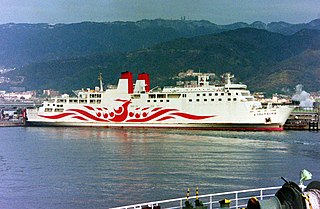
MV SuperFerry 14 was a Philippine registered roll-on/roll-off (ro-ro) ferry that was attacked on February 27, 2004 by terrorist group Abu Sayyaf that resulted in the destruction of the ferry and the deaths of 116 people in the Philippines' deadliest terrorist attack. Six children less than five years old, and nine children between six and 16 years of age were among the dead or missing, including six students on a championship team sent by schools in northern Mindanao to compete in a journalism contest.

MV Le Joola was a Senegalese government-owned roll-on/roll-off ferry that capsized off the coast of The Gambia on 26 September 2002, with 1,863 deaths and 64 survivors. It is thought to be the second-worst peacetime disaster in maritime history.

The MS al-Salam Boccaccio 98 was an Egyptian Ro/Ro passenger ferry, operated by El Salam Maritime Transport, that sank on 3 February 2006 in the Red Sea en route from Duba, Saudi Arabia, to Safaga in southern Egypt.
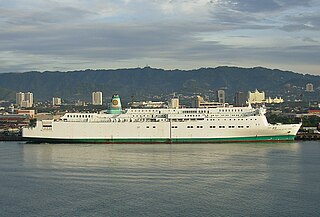
MV Princess of the Stars was a passenger ferry owned by Filipino shipping company Sulpicio Lines, that capsized and sank on June 21, 2008, off the coast of San Fernando, Romblon at the height of Typhoon Fengshen, which was locally named by PAGASA as Frank. The storm passed directly over Romblon as a Category 2 typhoon, leading to the capsizing of the vessel; 814 people died as a result of the disaster.
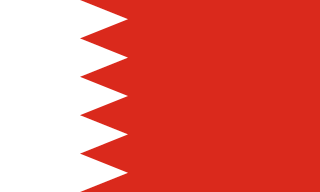
Bahrain, officially the Kingdom of Bahrain, is an island country in West Asia. It is situated on the Persian Gulf, and comprises a small archipelago made up of 50 natural islands and an additional 33 artificial islands, centered on Bahrain Island which makes up around 83 percent of the country's landmass. Bahrain is situated between Qatar and the northeastern coast of Saudi Arabia, to which it is connected by the King Fahd Causeway. The population of Bahrain is 1,501,635 as of May 14, 2023, based on elaborations of the United Nations data, of whom 712,362 are Bahraini nationals. Bahrain spans some 760 square kilometres (290 sq mi), and is the third-smallest nation in Asia after the Maldives and Singapore. The capital and largest city is Manama.

The sinking of MV Teratai Prima occurred on 11 January 2009, around 04:00 local time when a ferry carrying more than 300 people capsized in the Makassar Strait off West Sulawesi, Survivors stated that the ferry had been slammed by 4-metre (13 ft) waves twice. The first one hit so hard that the ship became unbalanced, before another wave hit from a different direction and sank the vessel.
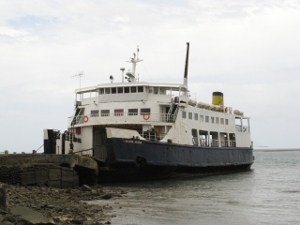
The MV Princess Ashika was an inter-island ferry which operated in the South Pacific kingdom of Tonga. This motorised vessel (MV) was built in 1972, and began sailing the Tongan route on 7 July 2009 only to sink less than a month later on 5 August. Official figures released by Operation Ashika on 19 August 2009, confirmed that 54 men were rescued, and 74 people were lost at sea. These include two bodies recovered and 72 missing, including five foreign nationals. Two of the missing passengers remain unidentified.

The sinking of MV Dumai Express 10 occurred on the morning of 22 November 2009 when a ferry carrying more than 300 people sank near the island of Iyu Kecil in Karimun Regency, Riau Islands during bad weather. Eyewitnesses reported that massive waves had struck the ferry repeatedly, causing the starboard side of the ship to crack. Subsequently, a considerable amount of water poured onto the deck. By 9:55 a.m. the ferry was fully submerged.

On 10 September 2011, MV Spice Islander I, a passenger ferry, reportedly carrying over 2,000 passengers, sank off the coast of Zanzibar. The ferry was travelling between Unguja and Pemba, two islands off the coast of mainland Tanzania, when it capsized. Early estimates put the death toll at around 200, but a report published by the Tanzanian government in January 2012 claimed that over 1,500 people had been killed.
On 30 April 2012, a ferry carrying about 350 passengers capsized in the Brahmaputra River in the Dhubri district of Assam in Northeast India. The disaster killed at least 108 people.
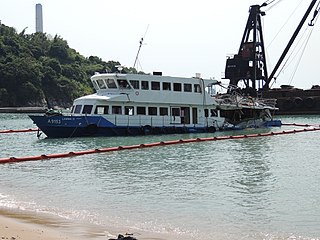
On 1 October 2012, at approximately 20:23 HKT, the passenger ferries Sea Smooth and Lamma IV collided off Yung Shue Wan, Lamma Island, Hong Kong. This occurred on the National Day of the People's Republic of China, and one of the ships was headed for the commemorative firework display, scheduled to take place half an hour later. With 39 killed and 92 injured, the incident was the deadliest maritime disaster in Hong Kong since 1971.

MV St. Thomas Aquinas was a Philippine-registered passenger ferry operated by 2GO Travel. On 16 August 2013, the vessel collided with a cargo ship named MV Sulpicio Express Siete of Philippine Span Asia Carrier Corporation and sank. As of 3 September 2013, there were 108 dead and 29 missing with 733 rescued as a result of the accident.

The ferry MV Sewol sank on the morning of April 16, 2014, en route from Incheon towards Jeju in South Korea. The 6,825-ton vessel sent a distress signal from about 2.7 kilometres north of Byeongpungdo at 08:58 KST. Out of 476 passengers and crew, 304 died in the disaster, including around 250 students from Danwon High School in Ansan City. Of the 172 survivors, more than half were rescued by fishing boats and other commercial vessels that arrived at the scene approximately 40 minutes before the Korea Coast Guard (KCG).
MV Sinar Bangun sank on 18 June 2018 in Lake Toba, North Sumatra, Indonesia, during its trip from Simanindo Harbour in Samosir Island to Tiga Ras Harbour in Simalungun Regency. The ferry was carrying 188 passengers and crew. After the sinking, authorities immediately deployed search and rescue personnel to the area. Twenty-one survivors were rescued, three bodies were found and 164 people were listed as missing and presumed dead.

MV Nyerere is a Tanzanian ferry that capsized on 20 September 2018 while travelling between the islands of Ukerewe and Ukara on Lake Victoria. The Tanzanian government have declared that 228 people died as a result of the capsizing while 41 could be rescued. The capsized ferry was successfully righted, retrieved and unloaded more than one week after the disaster.